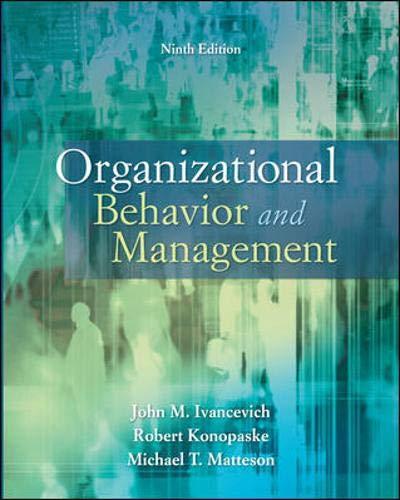It was about 2 p.m. when three Nucor Corp. electricians got the call from their colleagues at
Question:
It was about 2 p.m. when three Nucor Corp. electricians got the call from their colleagues at the Hickman, Arkansas, plant. It was bad news: Hickman’s electrical grid had failed. For a minimill steelmaker like Nucor, which melts scrap steel from autos, dishwashers, mobile homes, and the like in an electric arc furnace to make new steel, there’s little that could be worse. The trio immediately dropped what they were doing and headed to the plant. Malcolm McDonald, an electrician from the Decatur, Alabama, mill, was in Indiana visiting another facility. He drove down, arriving at 9 o’clock that night. Les Hart and Bryson Trumble, from Nucor’s facility in Hertford County, North Carolina, boarded a plane that landed in Memphis at 11 p.m. Then they drove two hours to the troubled plant.
No supervisor had asked them to make the trip, and no one had to. They went on their own. Camping out in the electrical substation with the Hickman staff, the team worked 20-hour shifts to get the plant up and running again in three days instead of the anticipated full week. There wasn’t any direct financial incentive for them to blow their weekends, no extra money in their next paycheck, but for the company their contribution was huge. Hickman went on to post a first-quarter record for tons of steel shipped.
What’s most amazing about this story is that at Nucor it’s not considered particularly remarkable. “It could have easily been a Hickman operator going to help the Crawfordsville [Ind.] mill,” says Executive Vice President John J. Ferriola, who oversees the Hickman plant and seven others. “It happens daily.”
In an industry as Rust Belt as they come, Nucor has nurtured one of the most dynamic and engaged workforces around. The 21,700 nonunion employees at the company, based in Charlotte, North Carolina, don’t see themselves as worker bees waiting for instructions from above. Nucor’s flattened hierarchy and emphasis on pushing power to the front line lead its employees to adopt the mindset of owneroperators.
It’s a profitable formula: Nucor’s 387 percent return to shareholders over five years handily beat almost all other companies in the Standard &
Poor’s 500 stock index, including new economy icons Amazon.com, Starbucks, and eBay. And the company has become more profitable as it has grown: Margins, which were 7 percent in 2000, reached 17 percent in 2008.
Nucor gained renown in the late 1980s for its radical pay practices, which base the vast majority of most workers’ income on their performance. This was a major, dramatic change in pay systems at the time.
An upstart nipping at the heels of the integrated steel giants, Nucor had a close-knit culture that was the natural outgrowth of its underdog identity. Legendary leader F. Kenneth Iverson’s radical insight was:
Employees, even hourly clock-punchers, will make an extraordinary effort if you reward them richly, treat them with respect, and give them real power.
Nucor is an upstart no more, and the untold story of how it has clung to that core philosophy even as it has grown into the largest steel company in the United States is in many ways as compelling as the celebrated tale of its brash youth. Iverson retired in 1999. Under CEO Daniel R. DiMicco, a 23-year veteran, Nucor has expanded to 22 plants while managing to instill its unique culture in all of the facilities it has bought, an achievement that makes him a more than worthy successor to Iverson.
Nucor’s performance, even in a depressed economy, has been nothing less than sensational. It has grown into a company with 2008 sales of $23.6 billion, up from $4.6 billion when DiMicco took over in 2000. In 2008 net income was $1.8 billion, up from $311 million in 2000. “In terms of a business model,” says Louis L. Schorsch, president and CEO of Nucor rival Mittal Steel USA, “They’ve won in this part of the world.
Questions 1. How would you describe the culture of Nucor?
2. Why is the type of executive pay practice at Nucor not found in many other companies?
3. If innovative solutions to problems are needed at Nucor, how do you think they will emerge? That is, will internal or external forces bring about the needed innovations? Explain.
Step by Step Answer:

Organizational Behavior And Management
ISBN: 9780073530505
9th Edition
Authors: John Ivancevich, Robert Konopaske, Michael T Matteson





